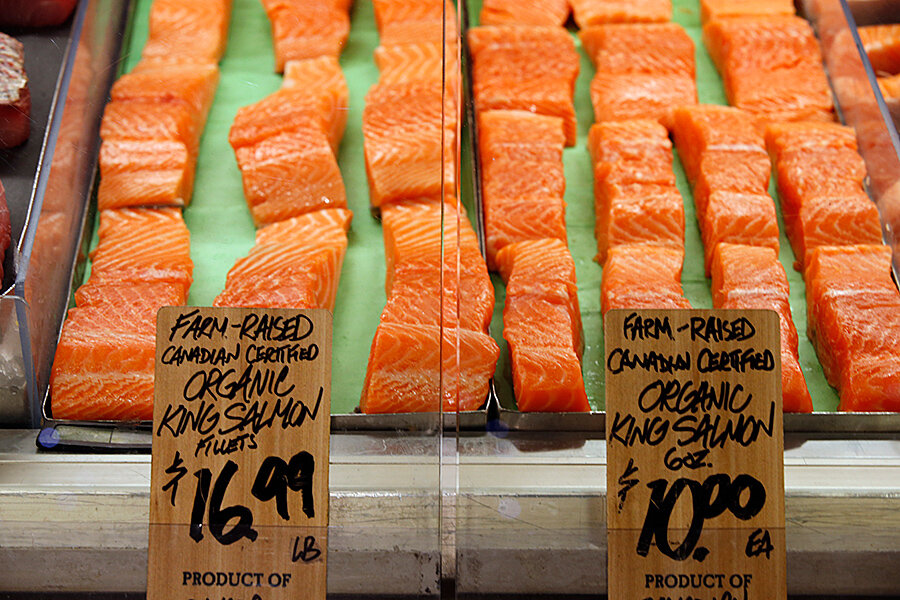This is not the salmon you're looking for
Loading...
Salmon recently become America's most popular fish, surpassing tuna for the crown in 2013. And why not? It's tasty, nutritious, and appropriate for most any meal - a lox bagel at breakfast, a grilled fillet at dinner. But according to a new study out Wednesday, there's a very good chance that America's many salmon lovers aren't getting exactly what they pay for.
An analysis of 82 US salmon samples by Oceana, an oceanic sustainability organization, found that salmon products were mislabeled 43 percent of the time. Uncovered through DNA testing, most of the fraud (69 percent) involved farm-raised salmon being labeled as higher-quality, wild-caught fish. In other instances, Salmon labeled as highly sought-after varieties, like Chinook or Coho, were found to be more common, lower-value species.
Salmon served in restaurants, meanwhile, was five times more likely to be mislabeled than fish sold in a grocery store.
“Americans might love salmon, but they may be falling victim to a bait and switch,” said Beth Lowell, senior campaign director at Oceana, in the study's release. “When consumers opt for wild-caught US salmon, they don’t expect to get a farmed or lower-value product of questionable origins. This type of seafood fraud can have serious ecological and economic consequences. Not only are consumers getting ripped off, but responsible US fishermen are being cheated when fraudulent products lower the price for their hard-won catch.”
Oceana collected its samples during the winter of 2013 and 2014, when fresh, wild-caught salmon is typically out of season. As a result, the findings diverted greatly from those of an earlier survey gathered during the height of commercial fishing season.
The study is just the latest in a string of reports casting serious doubt on the trustworthiness of the nation's seafood, a worrying trend particularly as consumers grow more concerned about the environmental impact of their food. Past Oceana studies have found that 30 percent of shrimp were mislabeled and 38 percent of blue crab, a celebrated local offering of the Chesapeake region, was actually different species imported from other countries. In March, the Obama administration launched a task force meant to combat illegal and unregulated fishing, as well as the pervasive mislabeling problem.
The problem, Oceana says, is not so much a shortage of high-quality, wild-caught products. US fisherman, in fact, catch enough salmon each year to meet 80 percent of the country's total salmon demand. But the majority of it is sold to other countries, because processing overseas is cheaper. Imported, farm-raised salmon is often sold in its place.
Sustainability NGOs are pushing the government to implement a comprehensive traceability program, wherein all seafood sold in the US would require documentation sourced and sold legally. But in the meanwhile, there are steps consumers can take to avoid being duped. Learning about fishing seasons and buying fresh, in-season seafood is a good start; a number of organizations provide handy seasonal buying guides, like this one from the Marine Conservation Society.
Oceana also recommends asking questions about where the product came from: if the vendors volunteer detailed information, or submit to voluntary certification programs, there's a greater probability the product is genuine.
And don't be pulled in by a can't-miss bargain. "If the price is too good to be true, it probably is," the study reads.








